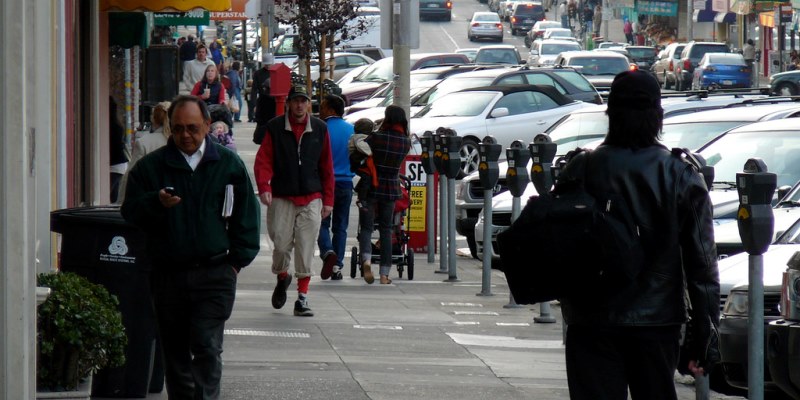Drugs, murder, cellphones and economics

At the Fraser Institute’s economics seminars for journalists, one of the messages we instructors try to get across is that economics isn’t mainly about interest rates, the stock market, exchange rates or other money matters, which is what most non-economists seem to believe we’re about. Economics does cover those things, of course, but it’s about lots of other things, too. In fact, we happily concede none of us has the slightest idea what will happen to interest rates, the stock market or the C$ next.
From now on when we try to make that point we should probably mention a new research paper from the Boston-based National Bureau of Economic Research (or NBER). It’s called “It’s the phone, stupid: Mobiles and murder,” by Lena Edlund, an economist at Columbia University in New York, and Cecilia Machado, a Columbia econ PhD currently at the Getulio Vargas Foundation in Brazil. Their paper’s title is inspired by Democratic strategist James Carville’s famously succinct synopsis of Bill Clinton’s 1992 election campaign message: “It’s the economy, stupid”—which it really was, as Clinton proved by making George H. W. Bush a one-term president.
It’s not an exact parallel. The “stupid” in their title isn’t nearly as justified. Whereas the 1992 election was pretty obviously about the economy, and anyone who thought otherwise was clearly mistaken, it’s not at all obvious what murder has to do with cellphones and vice versa. So don’t feel bad—or stupid—if you don’t immediately get the connection.
The intriguing correlation Edlund and Machado set out to explain is between the proliferation of cellphone use in the United States in the 1990s—a decade in which cellphones went from “niche to mainstream” as the number of subscribers rose from five million to 100 million—and the decline in murder rates over the same decade—from just over 11 per 100,000 Americans in 1990 to just over six per 100,000 Americans in 2000. Once you first hear about that stark inverse correlation possible connections do jump to mind. Cellphones make it easier to call the police if you think you’re about to be attacked. Would-be murderers might think twice if their intended victim is talking with someone on a cellphone. And so on. So it’s not implausible that there would be a connection.
The link the economists have in mind, however, is more complicated and operates through the market for illegal drugs. They argue that before cellphones drug selling was a site-specific activity. Dealers had to make themselves visible to potential customers in known places. That’s how they communicated that they had product for sale. The easiest way to do this was to establish “ownership” over particular locations, mainly street corners. The gangs that controlled drug movements also controlled, or tried to, selling locations. The way they enforced their “ownership” of such locations was with violence, including murder.
Edlund and Machado argue that the widespread use of cellphones eliminated the geographic imperatives of the drug trade. Dealers and customers could now communicate by phone and choose meeting places on an ad hoc and clandestine basis. The effect on the drug trade was pro-competitive, to use a term from economics. Thus both the direct effect of cellphones in reducing the importance of geography, and their indirect effect via the lower drug prices that resulted from the now greater competition in the drug market, ate into the profits of the gangs that typically controlled the drug trade and therefore reduced the profitability of gang turf wars. As gang wars were and still are an important source of murders, especially among young black and Hispanic males, the effect of cellphones was to reduce the incentive to kill.
It does admittedly sound a little iffy. It’s the kind of theory you’d like to have corroborated by lots of interview and anecdotal evidence from drug dealers and users who survived the nineties and could talk about how practices in the market changed over that decade. Though Edlund and Machado do offer some of that style of evidence they mainly rely on county-level data on both cellphone towers and murders. And they do find robust correlations across counties between county murder rates and the rates at which towers were being built into them. Other suggestive evidence is that the cell tower/murder rate correlation only occurs in urban counties, which is consistent with the idea that drug fiefdoms were mainly an urban phenomenon. The researchers also find “stronger effects for Black or Hispanic males (victims) and categories of homicides more closely associated with gang violence and drug dealing.”
The economists concede that cellphones aren’t the whole story (which is another reason “stupid” doesn’t belong in their title). They estimate that of the 10,000 fewer murders in the U.S. in 2000 than in 1990, their hypothesis explains some 1,900 to 2,900. So phones don’t provide a complete explanation. But they may well be an important part of it.
Canadian communications theorist Marshall McLuhan became famous in the 1960s by arguing that how technology changes the way we communicate is often more important than what we communicate. The medium is the message, as his most famous book said. It’s an idea he got in part from the great Canadian economist Harold Innis. The case of the cellphones and the murder rates seems to be another instance of it.
Author:
Subscribe to the Fraser Institute
Get the latest news from the Fraser Institute on the latest research studies, news and events.

